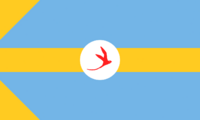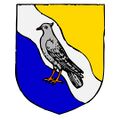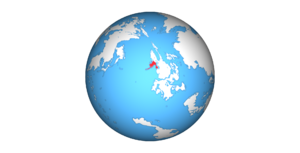Hubdova: Difference between revisions
No edit summary |
No edit summary |
||
| Line 78: | Line 78: | ||
Agriculture first developed later around 500 BCE in the fertile fields around the [[Pilware River]], downstream from the present-day city of [[Vilburg]] in the national districts of [[Telaxöron]] and [[Nicoshire]]. Evidence of the first crops grown in the areas is foggy at best, but historians have estimated that, most likely, the first crops were a sort of winter-wheat that could be grown during both the summer and winter growing seasons because of its environmental resilience. The development of agriculture in these areas led to the settling of increasingly larger settlements as time progressed. People could settle down and grow their food around the river, drinking the pristine waters from the glacial runoff from the Nicoshire Mountains upstream. | Agriculture first developed later around 500 BCE in the fertile fields around the [[Pilware River]], downstream from the present-day city of [[Vilburg]] in the national districts of [[Telaxöron]] and [[Nicoshire]]. Evidence of the first crops grown in the areas is foggy at best, but historians have estimated that, most likely, the first crops were a sort of winter-wheat that could be grown during both the summer and winter growing seasons because of its environmental resilience. The development of agriculture in these areas led to the settling of increasingly larger settlements as time progressed. People could settle down and grow their food around the river, drinking the pristine waters from the glacial runoff from the Nicoshire Mountains upstream. | ||
Not much more is known about this time, because | Not much more is known about this time, because approximately near year 30 BCE, a miniature ice age plagued these settlements, resulting in famine, disease, and mass death. The [[Pilware River]] froze over for 5 years straight, causing the residents of the agricultural settlements to die due to insufficient water resources for drinking and for irrigation for their crops. Everyone in the north mass migrated down south, following the animals as they did the same. They eventually resettled with their counterparts in [[Toclariä]] where the chill was less severe. The now-vacant Hubdovan Peninsula would not be inhabited for another 900 years and shaped the culture of Toclariäns in legends of ice that can still be seen to this day. | ||
===Early Hubdovan History=== | |||
Approximately around 910 CE, a tribe of Toclariäns broke out of the civilisation and migrated north in search of new land to found a new civilisation in an event called [[The Exodus]]. This new group and the Toclariäns would not be united for over a thousand years. The group followed the coast to the ----------- where the party's leader would found four villages: Joensuu, Mustikkamaa, and Kallio all centred around the largest of the four: Arcadia. This is the point that modern historians deem the official beginning of the founding of Hubdova by modern Hubdovans. [[City of Arcadia|Arcadia]] would be the start of the largest and, eventually, the capital of Hubdova. | |||
Revision as of 13:57, 13 December 2022
The Republic of Hubdova Husmdovnä Tasavalta | |
|---|---|
| Motto: “Astumme universumiin nöyrästi ja toivoen.” "We step into the universe with humility and hope." | |
| Anthem: To Victory With Honour | |
Orthographic map of the location of Hubdova | |
| Location | Located on a northwestern peninsula of North Laurentia. |
| Capital and largest city | Arcadia |
| Official languages | |
| Recognised regional languages | Karaami |
| Ethnic groups (2025) | |
| Religion | No Official Religion |
| Demonym(s) | Hubdovan |
| Government | Indirect Democracy |
| Kristofer Heikkinen | |
| Hanna Järvi | |
| Bjorn Kinnunen | |
| Täävi Niemi | |
| Legislature | Parliamentary Assembly |
| Parliament | |
| Establishment | |
| 1230 | |
| 1616 | |
| Area | |
• Total | 377,272.67 km2 (145,665.79 sq mi) |
| Population | |
• January 2026 estimate | 52,557,092 (19th) |
• 2025 census | 52,032,671 |
• Density | 57.3/km2 (148.4/sq mi) (16th) |
| GDP (PPP) | 2025 estimate |
• Total | 2.672 trillion Hunovas |
• Per capita | 68,875 Hunovas |
| GDP (nominal) | 2025 estimate |
• Total | 3.4 trillion Hunovas |
• Per capita | 69,312 Hunovas |
| Gini (2025) | 31 medium |
| HDI (2025) | very high |
| Currency | Hunova (⳩) (HUN) |
| Time zone | UTC: -10, -11 |
| Date format | DD-MM-YYYY |
| Driving side | right |
| Calling code | +29 |
| Internet TLD | .hd |
Hubdova (Hubdovan: Husmdovnä Tasavalta), officially the Republic of Hubdova, is a nation situated on the Hubdovan peninsula on the continent of North Laurentia. Hubdova is bordered to the north by Kurama Republic and has a sea boundary with Socialist Platypus in the western islands, around the island of Lesay. Hubdova covers a land area of 377,272.67 km2 (145,665.79 mi2) with a population of approximately 52,557,092 people (est. Jan. 2026). This population is spread across 9 national districts and 47 subdistricts. The capital and largest city is Arcadia with 9.06 million inhabitants and is the major economical and political centre. Other notable major urban areas include La Ardu, Ipoiphis, Vilburg, Nesmour, and Eqrihstead. Hubdova is considered an indirect democracy and has a Parliamentary Assembly with only one house. The national anthem is ''To Victory With Honour'' - written by Armas Maijala.
Etymology
The term "Hubdova" is the anglicised form of the native "Husmdovnä" from the Hubdovan native tongue. This name came out of a combination of two words, "husumme" and "dovnä". These two words came of the legend of the first words said during the settlement of Hubdova, that being "Tässä me husmme, tämä on dovnä" which roughly translates to "Here we live, this is home". This was changed into a simpler, English version that we know today as Hubdova. Other common ways of referring to Hubdova include "The Republic", and "'Dova" (informal). The demonym that is used to refer to items, events, places, or people originating in Hubdova is "Hubdovan".
History
Prehistoric Proto-Hubdovan History
Evidence from archaeological sites in and around Oxdurn Lake, the southern Hubdovan coast, and in the forests of Omattäs suggest that humans first settled on the Hubdovan Peninsula around 11,000 BCE, with the earliest found just north the present day city of Eqrihstead.
Agriculture first developed later around 500 BCE in the fertile fields around the Pilware River, downstream from the present-day city of Vilburg in the national districts of Telaxöron and Nicoshire. Evidence of the first crops grown in the areas is foggy at best, but historians have estimated that, most likely, the first crops were a sort of winter-wheat that could be grown during both the summer and winter growing seasons because of its environmental resilience. The development of agriculture in these areas led to the settling of increasingly larger settlements as time progressed. People could settle down and grow their food around the river, drinking the pristine waters from the glacial runoff from the Nicoshire Mountains upstream.
Not much more is known about this time, because approximately near year 30 BCE, a miniature ice age plagued these settlements, resulting in famine, disease, and mass death. The Pilware River froze over for 5 years straight, causing the residents of the agricultural settlements to die due to insufficient water resources for drinking and for irrigation for their crops. Everyone in the north mass migrated down south, following the animals as they did the same. They eventually resettled with their counterparts in Toclariä where the chill was less severe. The now-vacant Hubdovan Peninsula would not be inhabited for another 900 years and shaped the culture of Toclariäns in legends of ice that can still be seen to this day.
Early Hubdovan History
Approximately around 910 CE, a tribe of Toclariäns broke out of the civilisation and migrated north in search of new land to found a new civilisation in an event called The Exodus. This new group and the Toclariäns would not be united for over a thousand years. The group followed the coast to the ----------- where the party's leader would found four villages: Joensuu, Mustikkamaa, and Kallio all centred around the largest of the four: Arcadia. This is the point that modern historians deem the official beginning of the founding of Hubdova by modern Hubdovans. Arcadia would be the start of the largest and, eventually, the capital of Hubdova.


